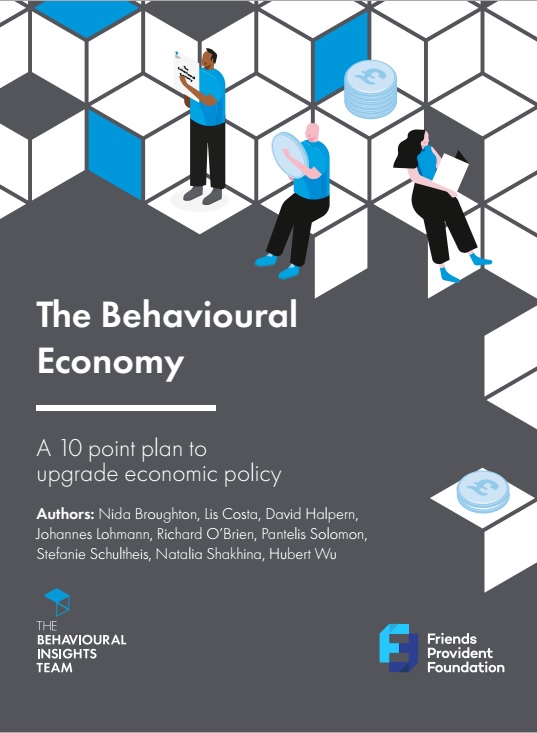Raising productivity is critical for raising the trend rate of growth and consequently the country’s standard of living. However, since the global financial crisis of 2008, productivity growth in many countries has slowed, especially in the UK.
Analysis suggests that boosting SME productivity could expand the UK economy by up to £100 billion a year. Alongside the 2019 Productivity Review, the UK government launched the Business Basics programme to test interventions to improve management practices and adoption of basic digital software among SMEs.
This blog presents the key findings and lessons from a series of BIT projects, including several large-scale randomised controlled trials, supported by the UK Department for Business, Energy & Industrial Strategy (BEIS)’s Business Basics Programme to study and test how behavioural science can inform the design and take-up of these programmes.
A key overarching lesson is that take-up of business support programmes continues to be a fundamental challenge for policymakers. It is unlikely that relatively small changes to how these programmes are communicated will make a substantial difference to take-up. Instead policymakers need to fundamentally rethink what an attractive and readily accessible business support offer looks like.
Identifying trusted messengers
The academic and policy literature suggests business owners may be more receptive to messages from trusted and familiar sources. However, it is not always clear who, or what, these sources may be in an SME context, given their heterogeneity.
We worked with two industry associations, the Federation of Small Businesses (FSB) and the Association of Convenience Stores (ACS), to test whether signposts affiliated with these organisations could increase take-up of an online productivity benchmarking tool relative to a message affiliated with the Government.
Over 90,000 FSB members and 3,000 ACS members were randomised into receiving one of four treatment arms in two parallel Randomised Control Trials (RCTs). We found that for ACS members, including a government message (emphasising that BEIS recommended the tool) was around a half as effective than the standard message at generating click throughs. Qualitative evidence suggests that many SMEs are unfamiliar with BEIS, which may have led to unease or even mistrust with the message and therefore resulted in the lower click throughs.

Figure 1: Clickthrough rate comparing standard to government message for ACS.
For FSB members, there was no difference in performance between any of the messages in generating click throughs. We speculate that this may be due to the relevant message in the FSB trial being in a less salient position (linked in a regular newsletter) than the ACS’ message (a standalone email).
Making the most of peer effects
Some of the most valuable sources of advice and insight for an SME owner can come from peers. Yet despite their potential, peer groups do not always form on their own. We ran two studies to explore how behavioural science could be used to harness the power of peer effects for productivity.
- BEIS Peer Networks Programme: We worked with BEIS to test whether making the Peer Networks communications material region-specific increased intent to sign up. We randomised an online sample of 1,000 SME managers/owners into seeing either a normal advert for the programme or a region-specific advert. The region-specific communications we tested increased participants’ understanding of the programme, although they did not increase intent to sign up.
- Cambridge Judge Business School: We partnered with Cambridge Judge Business Schools and Tech Nation to produce best management practices and tools, alongside peer interaction and access to an online mentor. Participants were assigned a cohort and added to a group chat with other peers alongside a mentor. We designed behaviourally informed announcements and reminders for participants and mentors. Due to limited statistical powerwe could not quantify the impact of the programme on outcomes such as participant’s productivity. However, there was evidence from qualitative interviews about the intervention’s potential that indicates businesses benefited in some way from the course, with over 250 messages sent between group members throughout the study.
Investigating new touchpoints for business advice
Business owners regularly take advice from trusted intermediaries within their existing networks, such as their bankers and accountants. These intermediaries could play an important role in diffusing best practice to their clients.
We acted as an evaluator for a UK not-for-profit, Be the Business (BtB), to test whether the adoption of business technology could be helped by one such intermediary: business client relationship managers at one of the UK’s largest banks, Lloyds Bank.
SMEs were sent information about Be the Business Digital (BtBD), an online tool with guidance for businesses about software adoption, delivered alongside support from their assigned banking Relationship Manager (RMs) at Lloyds Bank.
We evaluated whether the digital platform, alongside support from banking advisors, improved progress towards technology adoption, actual adoption and intentions to adopt. We found no statistically significant outcomes, though there were directionally negative results on progress towards adoption and actual adoption. However, issues with data collection and lower take-up than expected impacted results. For example, only 10% of SMEs in our treatment group reported using BtBD and just under a quarter reported discussing technology with their RM.
Lessons learned
1. Reaching many businesses does not necessarily translate to significant take-up
This project found many low-cost ways to reach businesses (eg e-mail, newsletters), but these often don’t translate into the desired levels of behaviour change such as significant take-up of a productivity tool or management training program. Even channels that superficially appear promising, for example, existing relationships between banks and SMEs, don’t necessarily translate into high take-up rates.
2. Messenger effects can vary greatly depending on context
Messenger effects are important but it is not obvious what will work well in advance. For example, one trial suggested region-specific communications may not always resonate with recipients.
This reinforces the importance of case-by-case testing to discover what works to target SME owners in addition to (or rather than) solely drawing upon pre-existing research. The mix of results may come about due to the fact that a business is a diverse collection of individuals with varying motivations, unlike traditional behavioural interventions that target individuals rather than organisations.
3. The need for further research about fit-for-purpose business support
It is unlikely that relatively small changes to how business support programmes are communicated will make a substantial difference to take-up. More intensive approaches to communication may help. However, it is likely that take-up is held up by more fundamental issues, such as a lack of product-or-service market fit, combined with difficulty in targeting support to the right businesses at the right time. Managers of small businesses are often under huge time pressure, and if support offers are complex or don’t meet their needs at first glance, they are unlikely to investigate further. This suggests there needs to be a fundamental rethink on what attractive business support looks like, factoring in what businesses see a need for, and how to design programmes that work for them.






